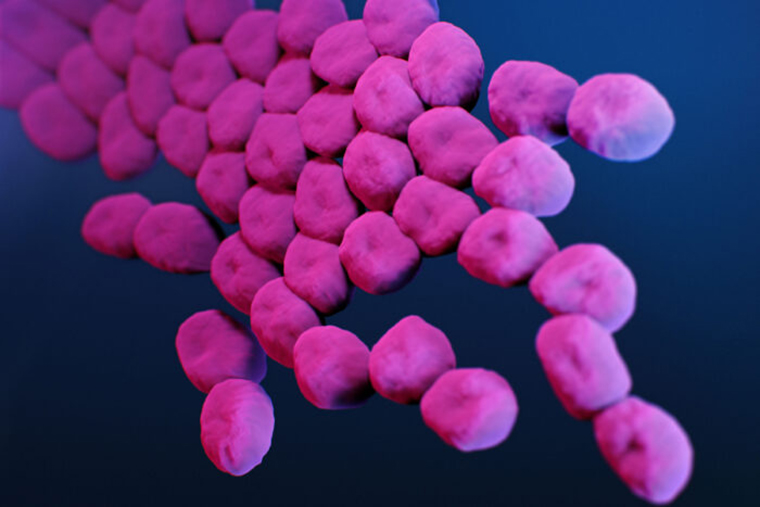研究者らは、ヒトの神経細胞の年齢を従来よりも進めました Researchers advanced the age of human neurons beyond what was previously possible
2023-01-12 ノースウェスタン大学
これまでの研究では、幹細胞を分化させて神経細胞にすることはできましたが、その神経細胞は機能的に未熟で、胚や生後早期の神経細胞に近いものでした。現在の幹細胞培養技術で得られる成熟度は限られており、神経変性研究への応用の可能性は低くなっています。
この研究成果は、1月12日、米国科学誌『Cell Stem Cell』に掲載された。
成熟した神経細胞を作るために、研究チームは、ノースウェスタン大学のサミュエル・I・スタップ教授が2021年末に発表した画期的な技術である「ダンシング分子」を使用しました。研究チームはまず、ヒトiPSCを運動神経と皮質神経に分化させ、急速に動くダンシング分子を含む合成ナノファイバーのコーティングの上に置いた。その結果、神経細胞はより成熟しただけでなく、シグナル伝達能力が向上し、神経細胞が互いにシナプス結合するために必要な分岐能力も高まった。また、一般的な幹細胞由来の神経細胞は凝集しやすいが、この神経細胞は凝集しなかったため、維持するのが困難でなくなった。
今後、さらに開発を進めれば、この成熟したニューロンを患者に移植することで、脊髄損傷や、筋萎縮性側索硬化症(ALS)、パーキンソン病、アルツハイマー病、多発性硬化症などの神経変性疾患に対する有望な治療法になると考えられるという。
また、成熟した神経細胞は、ALSなどの神経変性疾患やその他の加齢性疾患を培養皿ベースのin vitroモデルで研究するための新たな機会を提供します。細胞培養における神経細胞の年齢を進めることで、研究者は晩発性疾患をよりよく理解するための実験を改善することができます。
<関連情報>
- https://news.northwestern.edu/stories/2023/01/mature-lab-grown-neurons-hold-promise-for-neurodegenerative-disease/
- https://www.cell.com/cell-stem-cell/fulltext/S1934-5909(22)00494-5
可動性分子の人工細胞外マトリックス足場はヒト幹細胞由来神経細胞の成熟を促進する Artificial extracellular matrix scaffolds of mobile molecules enhance maturation of human stem cell-derived neurons
Zaida Álvarez,J. Alberto Ortega,Kohei Sato,Ivan R. Sasselli,Alexandra N. Kolberg-Edelbrock,Ruomeng Qiu,Kelly A. Marshall,Thao Phuong Nguyen,Cara S. Smith,Katharina A. Quinlan,Vasileios Papakis,Zois Syrgiannis,Nicholas A. Sather,Chiara Musumeci,Elisabeth Engel,Samuel I. Stupp,Evangelos Kiskinis
Cell Stem Cell Published:January 12, 2023
DOI:https://doi.org/10.1016/j.stem.2022.12.010

Highlights
•ECM-mimetic PAs with distinct non-bioactive domains show different molecular motion
•Culturing hiPSC-neurons on highly mobile IKVAV-PA2 nanofibers enhances ITGB1 activation
•IKVAV-PA2 coatings reduce neuronal aggregation, increase functional maturity
•IKVAV-PA2 coatings facilitate modeling of neurodegenerative pathology in vitro
Summary
Human induced pluripotent stem cell (hiPSC) technologies offer a unique resource for modeling neurological diseases. However, iPSC models are fraught with technical limitations including abnormal aggregation and inefficient maturation of differentiated neurons. These problems are in part due to the absence of synergistic cues of the native extracellular matrix (ECM). We report on the use of three artificial ECMs based on peptide amphiphile (PA) supramolecular nanofibers. All nanofibers display the laminin-derived IKVAV signal on their surface but differ in the nature of their non-bioactive domains. We find that nanofibers with greater intensity of internal supramolecular motion have enhanced bioactivity toward hiPSC-derived motor and cortical neurons. Proteomic, biochemical, and functional assays reveal that highly mobile PA scaffolds caused enhanced β1-integrin pathway activation, reduced aggregation, increased arborization, and matured electrophysiological activity of neurons. Our work highlights the importance of designing biomimetic ECMs to study the development, function, and dysfunction of human neurons.


